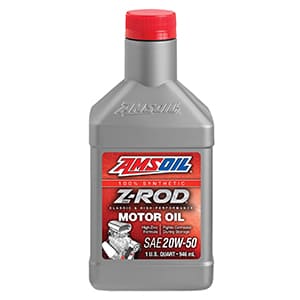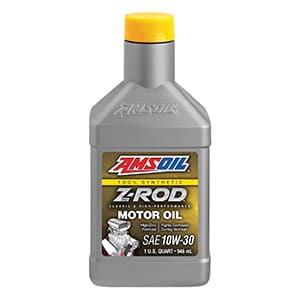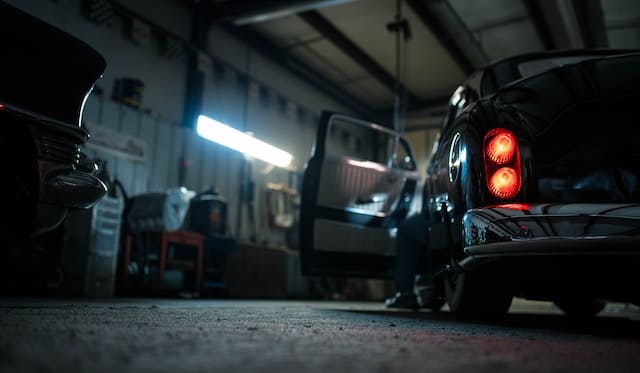If you are of an age to recall the Olds* 442 model, you have probably pondered the question, what does the 442 in Oldsmobile* 442 stand for? The numerals 442 meant that the vehicle had a dual exhaust system, a four-speed manual transmission, and a four-barrel carburetor. These high-performance upgrades were installed in the Oldsmobile* Cutlass* 442.
The Olds* 442 was never meant to be a regular car—it was always meant to be a high-performance machine. The Olds* 442 would become associated with Olds* muscle cars despite the fact that its characteristics would change throughout the course of its production history.
In the year before, the Pontiac* GTO* established the benchmark, and the Cutlass* 442 was the car that came after it to follow in its footsteps. Oldsmobile* was dead set on capturing a share of the rapidly growing market for muscle cars. When it came time to install the most powerful engine that was commercially available at the time, the technical experts at Oldsmobile* opted for a chassis of a more moderate size.

In order to meet the high-performance technology demanded by police departments for pursuit vehicles, the displacement of this V8 engine was increased to 330 cubic inches.
To further improve the vehicle’s handling, the package also included a rear stabilizer bar and heavy-duty shock absorbers as part of its components.
The debut year of the 442 was quite confusing as a result of the fact that it could be purchased on both the F-85 and the Cutlass* during its initial year of manufacture.
It is clear that the firm had not yet perfected its marketing approach as seen by the fact that less than 3,000 Oldsmobile* 442s were sold in the year 1964.
The situation would get better in time, despite a rough start. In comparison to prior years, Oldsmobile’s* advertising in 1965 was a huge success. Promotional brochures for the 442 portrayed it as a car ideal for young people.

The number of closed sales started to climb after adopting this method. The finished product was far superior than its individual parts. A brand-new 400-cubic-inch V8 engine was installed in lieu of the one that was there before, which resulted in an increase in output to 345 horsepower.
The already great handling of the 442 was further improved by the upgraded package. Heavy-duty springs and shock absorbers were installed in it for better handling. Big tires and front and rear stabilizer bars were other features of this vehicle.
The introduction of the 1966 Cutlass* 442 was emphasized by the installation of a new engine under the hood and new sheet metal on the outside of the vehicle. For the purpose of fueling the engine, Oldsmobile* engineers chose three carburetors. All went well during installation, and as a result, output was raised to 360 horsepower.
Further suspension modifications led to a notable improvement in the vehicle’s steering and handling. Almost immediately, General Motors* put a stop to the practice of installing three carburetors in its vehicles. Engineers at Oldsmobile* had to develop new methods to keep the engine as powerful as it was in 1967.
The adoption of the W-30 package, sometimes known as a “forced air induction system,” made this feasible. Adjustments were made to the camshaft as well as the engine’s springs in order to improve the vehicle’s energy effectiveness. In 1968, the well-known name, 442, was used for the first time as a model number on its own.

There was no more talked-about event in 1968 than the Hurst*/Olds* release. At first, the 442 was supposed to be a one-off combination of the 442 with the 455 cid V8 that was found in Oldsmobile’s* Toronado*.
The management of Oldsmobile* gave its approval for the automobile to have a restricted production run. As there were only 515 of these automobiles manufactured in 1968, collectors should expect to pay a high price for one now. In 5.4 seconds, they could accelerate from zero to sixty miles per hour.
This limited-edition Hurst*/Olds* 442 was capable of reaching a high speed of about 130 miles per hour, thanks to its approximately 390 horsepower.
In 1968, Hurst*/Olds* made a triumphant comeback, with a new paint job and enormous hood scoops as part of their vehicle design. The engine was given a slight detune, which resulted in the power output being lowered to 380 horsepower.
Oldsmobile* was able to offer its 455-cubic-inch V8 as standard equipment on all 442s when General Motors* dropped its prohibition on midsize vehicles with engines larger than 400 cubic inches in 1970.
There was no sign of the Hurst*/Olds* duo, and we wouldn’t see them again until 1972. The W-30 reached its highest power output to date with a 455 V8 that had been balanced, blueprinted, and substantially changed. The Rally* 350 was launched as a 442 option in 1970.

Its 310-horsepower motor was standard fare, but the exterior design was unique. Bumpers and wheels were painted a bright yellow to improve the vehicle’s curb appeal.
The 442 Rally* 350 was the apogee of luxury and performance before the muscle car era began to decline in the 1970s as a result of the global oil crisis. The 442 had the same problems with power capacity that had plagued previous muscle vehicles for the vast bulk of the time since 1971.

The 442 designation was employed exclusively to describe Cutlass* trim levels since 1972. Even after being brought back to life, Hurst*/Olds* could only muster 300 horsepower, making it a pale imitation of its former self. The power output of Hurst*/Olds* has dwindled to a dismal 250 horsepower by the year 1973.
After 1973, the management of Oldsmobile* came to the conclusion that they would no longer produce high-performance muscle vehicles. Though several cars bore the 442 moniker, no later iterations were able to match the originals’ performance.

The time has come to bring an end to our conversation on What Does the 442 Stand For in the Oldsmobile* 442? You can expect more information about historic muscle cars to be added to this site in the near future, so keep checking back.
Consider the enormous advantages offered by custom developed synthetic lubricants if you own an Olds* 442 muscle car and are searching for the highest level of protection that can possibly be offered for your cherished historic vehicle. The combination of rust and corrosion inhibitors found in high-performance synthetic oil designed for muscle cars will provide the greatest possible protection against rust and corrosion during long-term storage.
The best synthetic engine oil for muscle cars will have a high zinc content to preserve flat-tappet cams, rockers, lifters, and other essential engine components. This is because synthetic motor oils are more durable than conventional motor oils. Copious amounts of ZDDP will drastically cut down on wear.
*All trademarked names and images are the property of their respective owners and may be registered marks in some countries. No affiliation or endorsement claim, express or implied, is made by their use.
